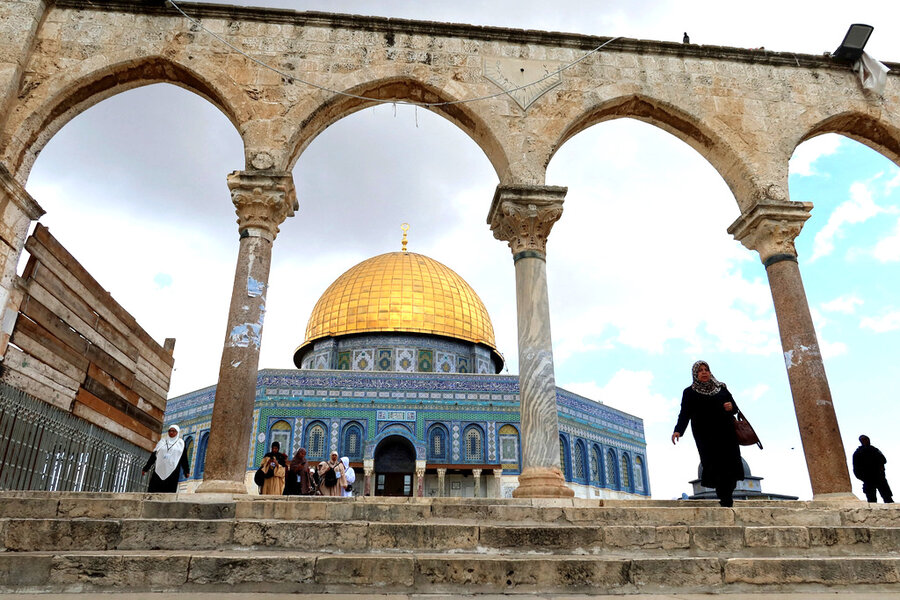Building bridges over a war’s divide
Loading...
In the decade before 2022, the number of active conflicts in the world rose from 33 to 55, according to the Peace Research Institute Oslo in Norway. During that period, no single war was fully quelled by international peace efforts. So it may seem like an odd moment for optimism, as a number of people are making quiet efforts for peace building during the current Israeli-Palestinian crisis.
One approach, according to an article in the journal Foreign Affairs, requires “a broad coalition of politicians, business leaders, the UN, peace builders, and local communities.” Another one, says Tasneem Noor, program director of NewGround, a Jewish-Muslim community-building organization based in Los Angeles, is for individuals to look at their own assumptions about the conflict. “There is a value of looking for the goodness, even in the hardest of times,” she told PBS NewsHour. “Radical listening ... is a powerful way of disarming so much of the angst and the anger that we hold.”
Every security challenge, the United Nations notes, is compelling new ways of “weaving a safety net of adaptation, collaboration, and innovation.” Solutions to climate change in the Sahel region of Africa, for example, offer fresh ways to safeguard and stabilize communities affected by violent extremism. More than any other conflict, however, the crisis in Gaza is showing the positive potential impact of the thoughts and actions of individuals.
Take, for example, a City Council meeting last week in Sacramento, California, that turned into a forum for healing. Community members had sought a resolution calling for a cease-fire in Gaza. When protesters interrupted the meeting with antisemitic insults at the city’s Jewish mayor, people who identified themselves as Palestinian Americans rose to leave. They wanted no part of the ugliness. That led to a moment of reconciliation and empathy.
“I was just very moved by the reaction of Palestinian Americans,” Mayor Darrell Steinberg told The Sacramento Bee. “Even though it was a small moment ... in a troubled world, it just gave me hope that maybe peace is really possible.”
Such incidents are happening in many places. In Winnipeg, Manitoba, Muslim and Jewish communities have held numerous shared events since the Gaza crisis erupted last month. The events have allowed both sides to share their grief. In Berlin, Israeli and Arab students at the Barenboim-Said Academy refused to let their divided anguish derail a scheduled concert last week.
“Now is the time to remove the walls and look at each other,” Katia Abdel Kader, a violinist from Ramallah, West Bank, told The New York Times. “The moment you just look in someone’s eyes and you understand we’re just the same – that’s what matters for me.”
Insights like those create broad ripples. They move individuals from narrow misconceptions to what Eboo Patel, president of Interfaith America, calls a framework for pluralism built of respect, empathy, and cooperation. They add up to a potential new era of peace building.





